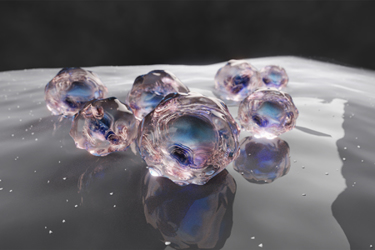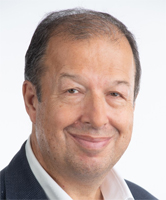IPSCs For Democratized Cell Therapy

By Matthew Pillar, Editor, Bioprocess Online

Differentiated Focus On Harnessing The Innate Immune System
Cytovia Therapeutics was launched in 2019 on the premise that allogeneic, innate immune cells held the best promise for next-generation cell therapy development in oncology. The co-founders of Cytovia, CEO Dr. Daniel Teper and Board Director Dr. Laurent Audoly, built the company on two complementary technologies: (1) natural killer cells differentiated from stem cells (iNK cells), that could potentially be edited, and (2) multifunctional tetravalent cell engager antibodies that boost the activity of natural killer cells (dubbed FLEX-NK cell engagers). Both technologies, says Dr. Teper, generate so-called “off the shelf” therapeutics that can be suited to all patients.
The unmet needs Cytovia seeks to address represent some very large patient populations. Worldwide, there are close to 800,000 hepatocellular carcinoma patients, and about 100,000 suffering from myeloma. Myeloma, while representing a smaller patient population, is a more mature market. “In recent years, pharmaceutical treatments for myeloma grew from a few billion in worldwide sales to more than 20 billion, and sales are expected to approach 30 billion by 2026,” says Dr. Teper. The largest product in that category is the CD38 antibody DARZALEX (daratumumab) from J&J, which alone tallied $6 billion in sales in 2021.

That technology has given rise to a preclinical pipeline that company co-founder, chairman, and CEO Dr. Daniel Teper repeatedly characterizes as “differentiated.” “We noticed that a number of cell therapy companies have migrated toward targets that are well-validated, but very crowded, such as CD19 or BCMA,” he says. Noting that there’s nothing wrong with that – and he’s right, because competition yields innovation in drug development – he acknowledges that the business risk of joining the well-validated masses gets real at the clinical stage. “Once you validate the technology and order clinical trials, if you’re number seven of 25 CD19 or BCMA therapies, you’ve got a big challenge ahead of you,” he surmises.
Regarding Cytovia’s differentiation strategy, its programs display different indications and treatment modalities, including a FLEX-NK cell engager targeting GPC3 for the treatment of solid tumors including hepatocellular carcinoma, another FLEX-NK cell engager targeting CD38 for multiple myeloma, and even a CAR-iNK cell candidate targeting epidermal growth factor receptor (EGFR) for glioblastoma. “It’s a balanced portfolio of relatively novel targets,” he says.
Fast Moving R&D Efforts And A Compelling Strategy
In April, Cytovia Chief Medical Officer Stanley R. Frankel, MD and Chief Scientific Officer Wei Li, Ph.D. presented at the annual meeting of the American Association for Cancer Research (AACR). Dr. Teper calls it a milestone for two reasons. “First, this marked the initial presentation of our own data at one of the most relevant scientific meetings, which is an important achievement for a young company. Second, consistently with our mission to differentiate, we’re the only company that’s developed both an IPSC-derived NK cell platform and an NK engager antibody platform. At the AACR meeting, we presented in vivo proof-of-concept data combining our iNK cells together with our GPC3-targeting NK engagers, demonstrating that we could reduce the tumor burden and the relevant biomarker protein in hepatocellular carcinoma,” he says.
The combination of antibodies and cells is unique and important, says Dr. Teper, because as the disease becomes more severe, the patient’s functional NK cell count is depleted. The capability of an antibody that redirects NK cells to kill tumor cells is limited if those NK cells aren’t functional when they’re engaged.
“The ability to add billions of NK cells, off the shelf, to reestablish the patient’s immune pool, leads to very significant efficacy,” says Dr. Teper. He says the approach might be an alternative to CAR-NK therapy, or it might be complimentary, but it will definitely improve accessibility. He anticipates the therapy being administered on an outpatient basis due to the limited risk of cytokine release syndrome and GVHD.
“If clinical trials confirm that the combination of the two is safe and effective, we're essentially opening up the opportunity for many more patients to benefit from cell therapy.”
Included among those patients, he says, are those suffering from solid tumors, which have presented cell therapy developers with a particularly vexing challenge. The differentiator in Cytovia’s NK cell engagers, says Dr. Teper, is that they target NKp46, an activating receptor on the NK cell. “Unlike some other activating receptors, NKp46 is very stable in its expression in infiltrating NK cells and we believe this is a potential advantage in targeting solid tumor.”, he says. Gene editing techonology will allow the company to consider edits to further reduce the inhibition of the tumor microenvironment and perhaps, he says, increase the persistence of NK cells.
Locking Down Best-In-Class Allogeneic Cell Therapy Manufacturing
Dr. Teper says that while the currently marketed autologous products are working for many patients, their production process is complex, the cost to produce them is too high, and the risk of side effects including cytokine release syndrome (CRS) and graft-versus-host disease (GVHD) limit their use. “Allogeneic CAR T-cell products have initially demonstrated some promising data, but not to the level of autologous products,” he says. “In contrast, allogeneic NK and CAR NK approaches have shown initial efficacy, have very good safety profiles, and are more reasonably manufactured.” While most of those approaches to-date have been produced from donor-derived cells, Dr. Teper believes induced pluripotent stem cells (IPSCs) are the way of the future due to the consistency and scalability they lend to the manufacturing process. “In addition to batch-to-batch consistency challenges in donor-derived cells, which limit their scalability, their lack of homogeneity makes gene editing more difficult,” he says. IPSCs, on the other hand, offer excellent product characterization, better scalability, a lower cost of goods, and easier gene editing opportunity. That’s because they originate from a highly controlled master cell bank that enables engineers to differentiate, expand, and cryopreserve trillions of highly characterized cells. “There are inherent process development, manufacturing, and cost advantages to IPSCs, and we think the FDA and other global regulatory agencies will increasingly request that cell therapy products be perfectly characterized. That's much easier to do when you have a monoclonal cell bank and you're able to characterize the product at every step of development.”
For its part, Cytovia is manufacturing its current supply internally. “The CDMOs are catching up with new cell therapy manufacturing technologies, and IPSC technologies in particular,” says Dr. Teper. That requires a sometimes-inefficient transfer of knowledge and processes. “We believe that internal control of manufacturing allows us to control the quality and availability of the product for clinical trials, and these are both extremely important for a young company.”
Rather than wholly outsource to a CDMO, Cytovia partners on R&D and GMP manufacturing with organizations including Cellectis, CytoImmune, the Hebrew University of Jerusalem, INSERM, the New York Stem Cell Foundation, STC Biologics, and the University of California San Francisco. In partnership with BioSciencesCorp, the company maintains a dedicated 100,000 square-foot facility in Puerto Rico comprised of six clean rooms and a process development lab, staffed entirely by Cytovia, which is currently producing clinical CGMP batches in anticipation of filing INDs late this year in preparation for clinical trials in early 2023.
Tracking To Plan On Securing Capital To Enable R&D And Clinical Trials
Pending the closings, proceeds from private placements, funds in Isleworth's trust account (net of redemptions), and proceeds from other prospective financings in the aggregate of up to $100 million, Cytovia forecasts up to two years of operating capital for further development of its gene-edited iNK and FLEX-NK cell engager technologies. The company plans to focus on multiple milestones, the most near-term being the filing of the company’s first INDs in 2022 and early 2023 for its GPC3 FLEX-NK cell engager antibody (CYT-303) and its non-edited iNK cell (CYT-100) in hepatocellular carcinoma and its CD38 FLEX-NK cell engager antibody (CYT-338) for multiple myeloma. In clinical trials, the company plans to study the antibodies and the cells alone and in combination. By the end of 2023, it intends to bring two additional products—CYT -150, a gene-edited iNK cell and CYT -503, a GPC3-targeted CAR iNK product—to the clinic. “It’s a franchise of multiple modalities, and our phase 1/2 trial will interrogate the safety and clinical response of each of them in one therapy or in combination, and then determine which we’ll move forward for pivotal trials,” says Dr. Teper.
By the end of 2023, it intends to bring two additional productsfor hepatocellular carcinoma—CYT -150, a gene edited iNK cell and CYT -503, a GPC3-targeted CAR iNK product—to the clinic. “It’s a franchise of multiple modalities that can be used alone or in combination, and our phase 1/2 trial will interrogate the safety and clinical response of each of them in one therapy or in combination, and then determine which we’ll move forward for pivotal trials,” says Dr. Teper.
Learn more about Cytovia Therapeutics at www.cytoviatx.com
